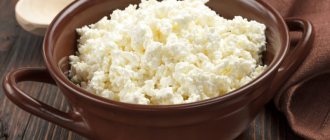Benefits and harms
Red onion has the following benefits when consumed:
- Antiseptic. The beneficial properties of fresh red onions are due to their powerful natural disinfectant effect. Moreover, disinfection occurs both at the external and internal levels. When applied externally, it successfully rids the skin of bacteria. Inside the body, it fights infectious agents so effectively that, imagine, it can even destroy the outer shell of influenza viral cells. And these are far from the only bacteria that suffer from it.
- Secretory. Onion juice causes the stomach to create a more acidic environment, thus boosting the digestive system.
- Acceleration of metabolism. Onion juice activates metabolic processes, and does this not only in one digestive system, but throughout the entire body. Thus, a person’s well-being improves to a large extent. It is not surprising, because the body not only receives a large amount of energy, but also distributes it more actively and competently. It is not for nothing that red onions are often included in dietary dishes, because accelerated metabolism is the main key to successful weight loss.
- Acceleration of blood circulation. Red onion juice also has benefits; one way or another, it has an irritating effect on the tissues with which it comes into contact. At the same time, the blood vessels expand, and blood begins to flow faster through the veins and arteries. This quality is indispensable for people who suffer from insufficient blood supply to the skin and, accordingly, all the ailments that are associated with it. The most common example that can be given here is baldness, which, in fact, often occurs because the scalp does not receive sufficient nutrition from the blood. No wonder onion masks are one of the most popular ways to combat hair loss. These remedies are so effective that their benefits have even been tested and recognized in clinical studies.
- Antihelminthic. Onion juice, which successfully fights virus cells, creates an irritating environment in the human body, which completely eliminates the possibility of internal parasites (we are talking about worms).
- And the most important thing worth mentioning is the processes that slow down aging. Red onion has a huge amount of antioxidants, which, coupled with all its previous properties, affects both the skin and organs, allowing them to stay young and healthy longer.
Fresh red onions are useful due to their rich composition, and they deserve detailed consideration:
- Chromium. Red onions contain large amounts of this element. The main function of chromium in the human body is to provoke the pancreas to produce insulin. Thus, the vegetable is highly recommended for people who suffer from diabetes, or for general prevention of the endocrine glands.
- Anthocyanin and quercetin. These substances have a strong strengthening effect. They actively influence cells that are part of the body's immune system. The result of this effect is the maintenance of the functioning of the nervous system, the timely removal of fluid from the body and blocking the effects of allergens on human health.
- Sulfur. As mentioned above, red onion juice accelerates blood circulation. Sulfur has a beneficial effect on the heart, and the amino acids that are produced during this interaction neutralize and remove toxic substances from the body.
Beneficial properties of red onion
This onion variety has reddish flesh and purple skin.
It is very rich in vitamins and various minerals. There are most of them near the husk, so you need to clean it as carefully as possible. It loses a third of its strength when we peel it off too thickly. The benefits of red onion and dishes containing it:
- Reduces the risk of diseases such as cancer
. This onion variety contains more antioxidants than its white counterpart. Thus, it reduces the risk of cancer. In addition, quercetin contained in onions provides an antitumor effect. - Prevents diseases of the cardiovascular system
. This happens thanks to the same antioxidants. - Helps with colds
. Anthocyanins, which give the peel a purple tint, help fight inflammation and bacterial diseases. Being a natural antiseptic, they destroy viruses inside our body. They also help strengthen the immune system. - Reduces allergic reactions, swelling and spasms
. This is due to the quercetin found in red onions. - Prevents the accumulation of cholesterol in the body
. Sulfur, found among the beneficial substances of onions, prevents blood cells from sticking together and thereby inhibits the increase in cholesterol by 20% (approximately 3-5 onions per week). In addition, the vegetable improves blood composition. - Helps with diabetes
. The microelement chromium, which red onions are rich in, reduces the concentration of sugar in the blood. The body's cells perceive insulin better, and the likelihood of developing this disease is limited. - Helps with secretory deficiency
. A couple of tablespoons of red onion juice has a beneficial effect on the acidity of the stomach. - Improves digestion
. This red vegetable helps normalize metabolism. Supports metabolism. - Promotes weight loss
. If you constantly eat red onions, the body takes in various groups of sulfur, which help reduce intoxication in the body and lead to weight loss. - Helps with gum diseases
. For this purpose, it is recommended to eat red onion feathers. - Rejuvenates the body
. The red vegetable slows down its aging.
Many beneficial substances in red onions have a healing or preventive effect if consumed regularly, because vitamins, minerals and other life-giving components must accumulate in the body.
Contraindications
There are also certain contraindications to the use of onions, which must be remembered.
- Increased gastric acidity or peptic ulcers. It is worth remembering that red onions, although they do not have the bitterness of regular onions, still provoke the stomach to increase acidity. So, if a vegetable increases the already high acidity and, even more so, disturbs the ulcer, then it will definitely not be good.
- Poor functioning of the kidneys and liver. It is worth remembering that red onion not only, and not even so much, cleanses the blood, but accelerates its circulation. So, if you put even more strain on your already poorly functioning kidneys or liver, this can result in very unpleasant complications.
- Skin diseases. It is worth remembering that although onions are capable of disinfecting the skin, they do so quite aggressively. So, if the skin disease has passed the initial stage, it is better to refrain from using onion juice.
Types of sweet varieties
It is worth mentioning the varieties that are most common for consumption in the latitudes of Russia:
- Crimson ball. Ready bulbs can be collected after sowing in the fourth month. At the same time, the vegetable has a burgundy, almost purple color, and its taste is soft and rich.
- Campillo. The prefix F is usually added to this variety. This variety was obtained through selection. It has a beautiful purple hue and a mild, sweet taste. If you want to include red onions in your child's diet, then this variety will be the best choice.
- Retro. This variety is distinguished by the fact that it ripens quite early compared to the others (if other onion varieties can ripen for 4 months, then this one is ready for harvest on the 90th day).
- Red Baron. This is a medium-ripening variety that matures in 3-3.5 months. Among the advantages are ease of cultivation and ease of storage.
Nutritional value and chemical composition
100 grams contain 42 kilocalories. One onion consists of 90% carbohydrates, 8% proteins and 2% fats.
The rich chemical composition of red onion has made it a natural medicine. It is distinguished by a significant content of fiber, vitamins A, C, group B and other useful substances such as potassium, cobalt, sulfur, boron, iodine, magnesium, fluorine, calcium, phosphorus and sodium.
Red onions are a storehouse of valuable substances, which, in the absence of contraindications, should be included in the daily diet of every person.
Use in folk medicine
Even official medicine recognizes that red onions have a very beneficial effect on the human body. It can even be simply consumed raw every day for preventive purposes. However, it is important to remember: an adult can eat no more than 100 grams of product per day.
Now let's talk about in what cases it is more acceptable to use this vegetable for therapeutic purposes.
- Cold. Everything is simple here: honey is mixed with onion juice in equal parts. You can consume it often, up to 5 times a day, but it is highly not recommended to do this on an empty stomach (as we remember, red onion juice increases acidity).
- Swelling. In this case, an infusion is made from red onion. It must be crushed or grated, then mixed with water in a ratio of 2 to 1. The infusion is infused for one night, filtered, and then consumed 3 times a day, a tablespoon. It is interesting to note that this infusion is recommended to be consumed on an empty stomach. Important! Edema can be caused either by water retention in the body or be a symptom of kidney, liver or circulatory system disease. Before using red onion against swelling, it is better to consult a doctor.
- Hair loss. As we already know, red onion juice stimulates blood circulation. Thus, with direct contact with the scalp, blood circulation in this area will be stimulated. For a simple mask, just grate the onion into a paste, then apply it to the scalp or rub it into the hair. On average, the duration of such a mask is from 20 minutes to 1.5 hours, but everyone determines the exact time for themselves, depending on the occurrence of unpleasant sensations. However, in this case there is one side effect: the mask leaves a not very pleasant smell. However, to eliminate it, simply wash your hair thoroughly with shampoo.
- Liver cleansing. Red onions contain a large amount of substances that neutralize toxins and stimulate the main organ for purifying the blood: the liver. For this purpose, the onion is chopped or grated, after which it is mixed with sugar in equal proportions and left to infuse for 10 days in a dark, cool room (but not the refrigerator).
This type of liver cleansing is purely preventative. If the body has diseases of the digestive tract, gall bladder, or the functional functioning of the liver is impaired, the use of such prevention is strictly contraindicated.
Benefit
Sometimes it is enough to eat even 100 grams of onions to protect yourself from approaching viruses or infectious diseases. The product also regulates the activity of the pituitary gland and prevents scurvy in humans. The benefit of the processed vegetable is its diuretic effect on the body.
Fried onions also stimulate the production of insulin, so they are helpful for diabetics and obese people, but in very limited quantities and when properly prepared.
Regardless of which type of onion is chosen, the benefit of the vegetable will also be to improve metabolism and speed up the digestive process.
Unfortunately, when we fry a root vegetable, its calorie content increases 5 times. This is due to the ability of vegetables to actively absorb fats. It is believed that to process 100 grams of onion, at least 25 grams are required. oils
If the caloric count is really scary, there are a few simple tricks. Firstly, the product must first be cut and dried. Secondly, you need to pay attention to the oil used. The lowest calorie content is found in root vegetables made from olive pomace. This is followed by vegetable oil and butter. Please note that 100 grams of deep-fried onion rings will generally contain at least 250 kilocalories.
Like any other product, onions, after frying, do not particularly change their properties, so contraindications will remain. People with gastrointestinal problems should be especially careful when consuming fried products. Allergic reactions can also be unavoidable, so harm to the root vegetable may also manifest itself as redness on the skin.
The most severe damage to the onion after frying is to the liver. This happens due to the abundance of fats in the product, which increases the load on the organ. Therefore, if you have health problems, it is better not to take risks.
In some, one might say rare, cases, fried root vegetables cause harm in the form of irritation of the nervous system. Overeating the product is fraught with disruption of the heart and blood vessels. In particular, your blood pressure can rise significantly. It is very rare that asthma attacks occur from fried onions in large doses.
Use in cooking
There are many ways to use red onions in the kitchen. It can be processed as needed for your dish - cut and chopped. In general, it is recommended to use the vegetable fresh. This is due to the fact that during heat treatment it loses all its attractive appearance. In addition, if onions are cooked, for example, in soup, then their dye can mix with the entire contents of the dish, which can result in a bluish tint that is not very pleasant to the eye.
And so, in general, the scope of using red onions is limited only by your imagination. It can be grilled in rings or baked in the oven. In the summer it will wonderfully decorate any of your salads, and in the winter you can simply eat it with bread. Some even add red onions to homemade pizza, thus combining business with pleasure.
Application
The method of preparing red onions determines how great the benefits will be for the body. All flavonoids are concentrated near the upper layers of the onion, so it needs to be peeled as little as possible. Cooking destroys many of the nutrients in red onions. However, cooking over low heat reduces the loss of vitamins.
Since cooking usually loses all the sweet flavor of red onions, they are often used fresh. Red onions are ideal for salads, which is why they are sometimes called "salad" onions. However, this onion is contraindicated for liver and kidney diseases. It is also advisable not to exceed the norm - 100 g of fresh red onion per day.
Market Analytics
- COVID-19 is changing the rules of the game in the cosmetics market
- Beauty of the future: cosmetic innovations 2020
- New ingredients are the driving force of the cosmetics industry
Convenient search for beauty salons on our website
Beauty salons in Moscow Beauty salons in St. Petersburg Beauty salons in Ekaterinburg Beauty salons in Novosibirsk
Latest blog posts on our website
- Naturecream / Geranium (Pelargonium) oil for skin health and beauty
- Prostye-sovety / Save on a beauty salon: procedures that can be done at home
- Naturecream / Growth Factor - brings back youth?
- Oksana-Lezina / 3 effective abdominal exercises from a fitness instructor for beginners
- Prostye-sovety / Making perfect curls at home
- Prostye-sovety / Which hair removal method to choose
- Naturecream / Wrinkles Puppets
- Naturecream / PEPHA-TIGHT - instant skin lifting
- Naturecream / Blue light - a danger to the skin
- Naturecream / Cocoa Butter – A treat for the skin
Latest forum topics on our website
- Mrs._Smith / Badly sunburned! What to do?((
- Ice / Is it necessary to combine fitness classes with a diet?
- Antonova / What can be used for hair loss?
- Radio operatorKat / Who was on a protein diet?
- Suzanna / Mesotherapy on the face
Other articles in this section
| Yarrow Yarrow has been known since ancient times as a medicinal plant. This plant was discovered in an ancient burial site in Iraq, dating back to 6000 BC. e. Its Latin name Achillea millefoilum comes from the name of the ancient Greek hero Achilles. According to legend, the centaur Chiron gave this herb to Achilles so that he could heal the wounds of his soldiers. Yarrow is a plant up to 1 m tall with pinkish-white flowers and has a characteristic odor and bitter taste. Grows in Europe, the Middle East and North America. In the 17th century often used in cooking. |
| Dried peas Dried peas come in green and yellow colors. Yellow peas are more common in Russia and Northern Europe. Pea pods are harvested when fully ripe and then dried. These peas can be stored for quite a long time, at least a year. Ancient peoples consumed peas for thousands of years. It was only in the 16th century, when sweet green peas appeared, that people began to add fresh peas to their food. In the 19th century Peas have played an important role in the study of genetics. So, the botanist Mendel used it for his breeding experiments. |
| Jerusalem artichoke Jerusalem artichoke is a root crop of the sunflower genus of the Asteraceae family, native to the central regions of North America. It is sometimes called the “Jerusalem artichoke” or “earth apple”. Jerusalem artichoke tubers are round in shape and covered with brown, purple or pink skin. The average weight of a tuber is 100-200 g. The fruit pulp is white and sweetish, contains starch. In many countries of Western Europe and the Mediterranean region, Jerusalem artichoke is used in the same way as potatoes. |
| Canned eggplant caviar After the famous film “Ivan Vasilyevich Changes His Profession,” the nickname “overseas” was assigned to eggplant caviar, although this dish is little known outside the former USSR. Georgia is said to be the probable homeland of eggplant caviar. Canned eggplant caviar is rich in vitamins and minerals, making it an excellent winter snack. |
| Kale Cabbage Kale cabbage also belongs to the cruciferous family, but unlike other types of cabbage, it does not form heads. Its curly green leaves are more reminiscent of salad greens. In some varieties, the leaves are not curly, but smooth, and the color varies from green to purple. The ancestor of kale is considered to be wild kale, but the exact place of origin has not been established. |
| Nettle Nettle is known throughout the world for its “stinging” leaves. The leaves and stem of nettle are covered with hairs, the chemical in which causes irritation when in contact with bare skin. |
| Green onions Green onions contain a wide range of nutrients, vitamins and minerals. Eating green onions daily is an excellent prevention of many diseases. Like other plants in the onion family, green onions have a special onion smell. In China, green onions have been grown for more than 5 thousand years, and the ancient Egyptians saw the onion as a symbol of the universe. |
| Sweet potatoes (yams) Unlike regular potatoes, sweet potatoes are not a tuber, but a root. Its homeland is also Central and South America, where the local population has been growing this vegetable crop for more than 10 thousand years. Sweet potatoes also came to Europe thanks to H. Columbus. In the 16th century Spanish and Portuguese travelers spread this culture to the Philippines and Africa. Currently, the largest supplier of sweet potatoes is China, where 80 million tons of sweet potatoes are produced annually. |
| Arracacha Arracacha is a root vegetable of the Umbelliferae family from Latin America, related to carrots and celery. Most common in Brazil, Colombia, Ecuador and Venezuela. The harvest season lasts from January to September. Unlike potatoes, which were brought to Europe from Latin America, arracacha is a very rare vegetable for mid-latitudes. Fruits develop only under certain temperature conditions; root ripening lasts several months. It is very difficult to grow this crop in a continental climate. In Venezuela this vegetable is called “Creole celery”, and in Ecuador it is called “white carrot”. In Brazil, arracacha is grown on an industrial scale. There are several varieties of root vegetables - yellow, orange and white. |
| Green beans Green beans belong to the genus Common bean, legume family. It is popular both in European cuisine and in Asian and African countries. This versatile vegetable crop grows in various climatic conditions, which is why it has become so widespread throughout the world. Bean pods are picked green without waiting for ripening, which is why they are also called green beans. |
Growing
Although the process of growing red onions is not particularly difficult, there are still a few points worth paying attention to when compared to bulb onions. Like onions, red onions take two years to grow. In the first year, feathers and onion sets sprout. The resulting small onions are planted the next year, although they are also edible and have almost the same properties as an adult onion.
Onions grown for the next year are harvested after 3-4 months, depending on the variety. The main points to pay attention to are humidity and light. If these parameters are met, onion care is reduced to a minimum, and already in July-August you will have an excellent harvest of bulbs.
Use in cosmetology
This onion has also been used in this area, although not as extensively as, for example, for parsnips or ordinary onions. The main area in which red onions are used is, of course, hair. With the help of red onion, you can either simply strengthen your hair and scalp or give your hair a darker shade. So, if you have light hair and would like to give it a darker shade, but at the same time you are put off by too drastic experiments, this method is perfect for you.
By the way, keep this life hack in mind: Easter eggs can also be colored using onion juice. At the same time, they acquire an amazing burgundy color and look very beautiful on the table. Moreover, this dye is natural and completely safe for health. And what other Easter eggs are painted with is a very open and relevant question. Moreover, the egg often bursts and the paint gets onto the white and, therefore, into the human body.











